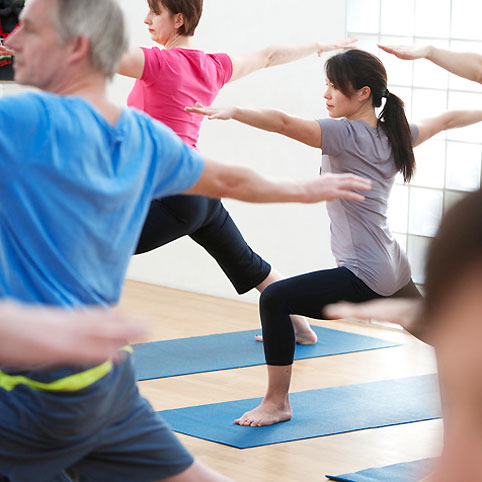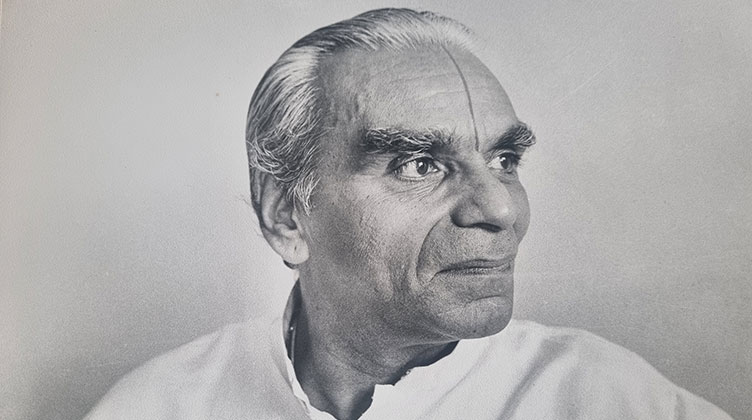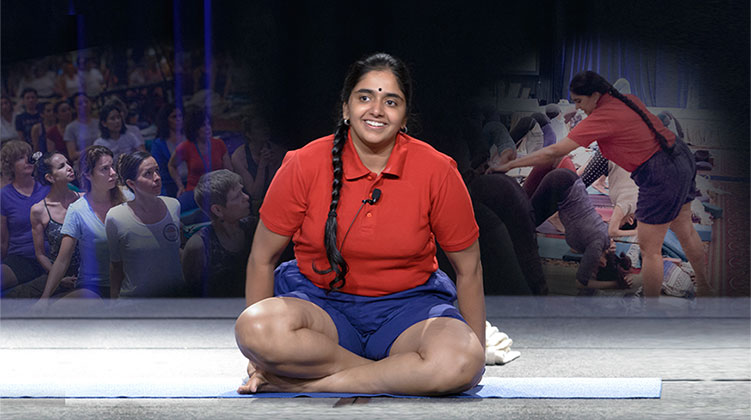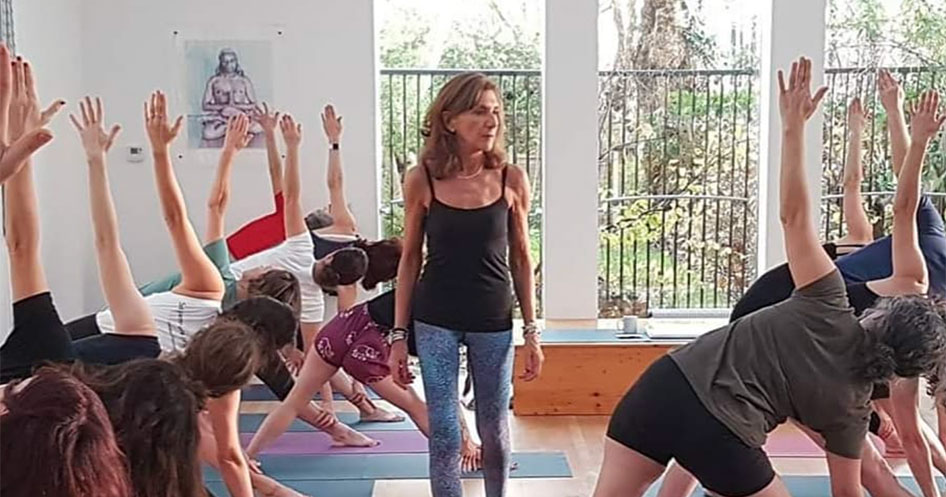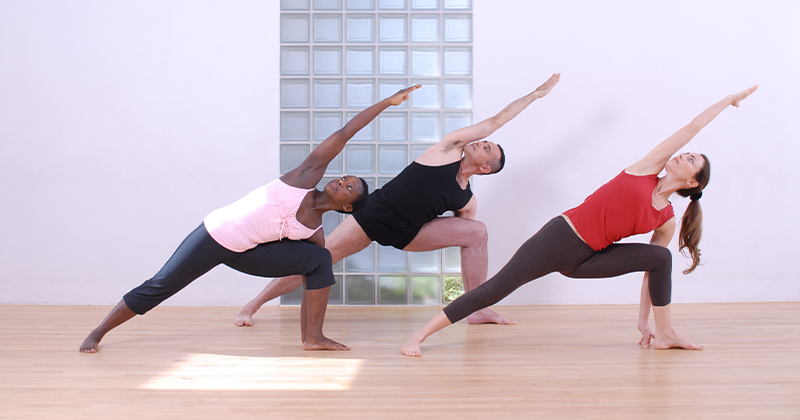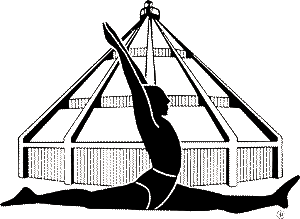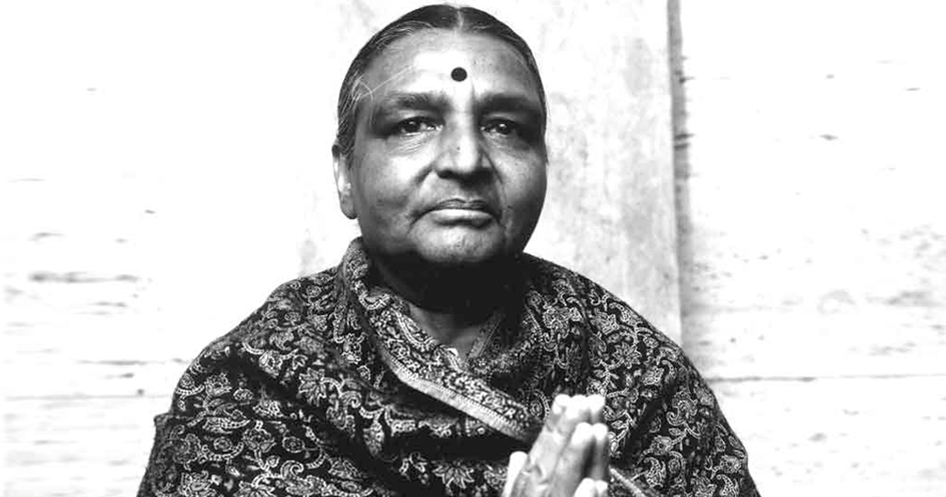
In the May 2002 issue of Dipika, the Iyengar yoga Maida Vale journal, we published an intervew with Dr. Geeta S. Iyengar on the subject of pranayama by Lois Steinberg. Many thanks to Lois for allowing us us to share it here.
LS – Pranayama is not easily taken up by students to practise. Could you describe the importance of a pranayama practice and how to develop it?
Geeta Iyengar – I understand the problem. I think students feel pranayama is of one type just depending on the breathing process and therefore monotonous. To get interested in the subject is difficult and one really has to go deeper inside whereas with asana it is not necessary for a beginner to go straight away into oneself. That means a beginning is made from outside in. Therefore, a beginner as an extrovert can easily start doing some kind of practice. Whereas for pranayama , one really requires the inward-going process. Not only does one have to become an extrovert, but one needs intra-vision. Patanjali very clearly indicated that pranayama has to come after asana is conquered. In the asana there is a process of going from outside in. Making the body to understand, getting the sensitivity, the feeling of equilibrium, inner alignments, etc. If that understanding comes, then the pranayama begins.
The problem is that when students begin to do pranayama, they can’t see an immediate effect of it. So they feel that there is not feedback from the early stages of practice. Whereas from asana there is an immediate feedback: you feel nice; you feel something good happening in you; some life coming in you, blood getting circulated, feeling freshness of the mind; you feel that dullness is lessening. But in pranayama these things cannot be felt immediately. It takes its own time.
But still, sometime the beginning has to be made. So if a beginner has to make an attempt towards it, first they have to learn to relax their body, relax their mind as we do in Savasana. Often I feel that Savasana is a kind of threshold between asana and pranayama. Once they begin to feel the relaxation in Savasana, students come closer to their breath. The mind gets settled inside and the cellular body settles. Then they come into contact with their inner energy. And once they come to know their inner energy and the breath then I think the interest in pranayama will begin to grow like when you put the seed into the soil – the sprouting has to occur at that stage.
At this stage, one becomes better acquainted with that breath. If we just have some ideas in our mind that breathing should be long, it should be very deep, it should be complete, then we run into so many obstacles because of our way of thinking. It doesn’t happen. The breath won’t be deep; the breath won’t be long. To reach toward those idealistic views one has to approach it differently. And if that is understood, then I think one will gain interest into the practice of pranayama. First, a beginner has to learn to do Savasana properly. And in Savasana, a beginner has to feel the movement of the breath, the inhalation and exhalation. And then, while exposing that inhalation and exhalation you gain insight into the body’s intelligence. A beginner has to feel the lungs, the ribs, the intercostal muscles, the abdomen, the very positioning and the very movement of it. What kind of inner expansion is occurring? How one is creating space in inhalation. How one is getting quieted in exhalation. How the body is receding. If this kind of dialogue with one’s own body and one’s own breath happens, I think a beginner will begin to get interested. But if you ask me for specific types of pranayama, then Ujjayi and Viloma will be helpful.
“I feel that Savasana is a kind of threshold between asana and pranayama. Once they begin to feel the relaxation in Savasana, students come closer to their breath.”
LS – In terms of other practical aspects of pranayama practice, some people get confused when to practise it in relation to asana.
Geeta Iyengar – It depends on how one has progressed in one’s practice. I would say a beginner always would prefer to do pranayama after asana practice.
LS – Even if it’s a strong asana practice?
Geeta Iyengar – After a strong asana practice, you give extra time to Savasana and then the pranayama can begin. It depends on how much time one has set aside for practice. When you say strong asana practice, let us suppose you have two hours to practise. One can divide that time. One and quarter hours, or one and a half hours of asana practice, ten minutes of Savasana and then twenty minutes of pranayama. After an asana practice the body develops some intelligence, some understanding. Even if they have done some standing poses, some forward bends, or some backward extensions or lateral twistings, some inversions like Sirsasana and Sarvangasana. Then with this regular, normal, usual practice, they can certainly do pranayama for half an hour: ten minutes of Savasana, and then another five or ten minutes of Ujjayi cycles, watching their breath. By that time the body is relaxed and the nerves are quieted. The impression of the fatigue they had in their asana practice will be removed in Savasana. Freshness in the body comes up. But intelligence doesn’t fade. What I mean by intelligence is, the nerve fibres get stimulated in the asana practice; there is a feeling of exhilaration and then with asanas such as Sarvangasana, Halasana or Setubandha Sarvangasana, the feeling of quietness comes to the nerves. That is a kind of nourishment to the nerves required for pranayama practice. So if that nourishment comes from the asana practice, then pranayama becomes easier. These asanas are conducive to take one’s attention inwards to feel the body, the breath and the mind. They pacify the ego and bring humbleness.
Sometimes your breath will be just normal and then suddenly you find your exhalation is becoming further, longer. It’s becoming somehow deep. So watch that. Observe that. Sometimes you find your inhalation is becoming deeper than normal. So how can this kind of progress occur in the inhalation and the exhalation? We begin to trace how the inhalation is happening. How the exhalation is happening. A kind of understanding and awareness comes. At that point the question is not whether what comes is correct or wrong, but it is a question of whether the sensitivity has come, whether you understand that there is some difference between inhalation and exhalation, there are some changes, occurring at a certain stage or not. Even if they begin to watch only that, I think they are gradually beginning to proceed toward the pranayama. One has to identify and notify what is happening within, with the body, mind and breath.
For well-advanced students, this question doesn’t arise. When you have got the feeling of pranayama, then you prefer to give a separate time for it. Because then you cannot just finish in a hurry. Then that student feels from inside that pranayama practice has to be separated from asana practice in order to get the proper effect. Let us say if pranayama is done for forty-five minutes or one hour, then obviously it cannot be joined with the asana practice. Most pupils will not have the time for a long asana practice and then a long pranayama practice. But you as senior pupils want to watch your pranayama. You want to learn something. You want to consolidate what you have learned. Then you need more time, longer duration. But as a beginner, I may suggest that instead of a full pranayama practice one can just lie down in Savasana and do some cycles of breath, watching the movement of the chest since it can be felt by one and all.
“Prana is not just the breath but the energy. And breathing is the process by which you apply that energy to find out how deep that energy penetrates and percolates”
LS – Since we are talking about pranayama, could you talk about the significance of Hanuman (Monkey God) to yoga?
Geeta Iyengar – Actually, Hanuman is called Prana Dev. He’s the Lord of Prana. And it is said that all the five Pranas are existing in him with full potency: Prana, Apana, Samana, Udana and Vyana. That means that Lord Hanuman has control over all these five Pranas. And through this control he has certain Siddhis (supernatural powers). In the tale of Ramayana, Hanuman really showed these qualities Hanuman was also a good musician. He was also a practitioner of yoga. And to some extent he was a Prana to Rama, if Rama was the soul. You see, we say the soul is the inner potency that we have, Drsta. And this Drsta has to be served by Drsya – the (The Seer). That’s what Patanjali’s Yoga Sutras say. Rama is considered to be the Purusha and Sita is the Prakrti. Hanuman is the Prana because the connection between the Prakrti and the Purusha is only on the path of Prana – the cosmic energy, the cosmic intelligence.
Prana is not just the breath but the energy. And breathing is the process by which you apply that energy to find out how deep that energy penetrates and percolates, how divine that energy is, how much purification of that energy is possible. How you can really explore that energy. We have hidden energy inside. The energy has to come up. It also serves the Purusha in different ways. And that is what Patanjali’s Yoga Sutras say – in the Vibhutu Pada – that you can get control over the different channels of energy. They are connected with the five elements and unless the Prana unites these five elements, the nectar from the five elements won’t come up. Each element has got its own strength, its own energy. When Prana gets united, this energy comes upwawrd. That is how Hanuman served Rama and Sita, Purusha and Prakrti, through his energy, through his own potency.
LS – Pranayama has saved my life, twice. When I couldn’t do anything else, I had pranayama.
Geeta Iyengar – It heals. Because you get some control over these senses of perception, the organs of action and through those, the body, of course. Pranayama strengthens the nervous system. You begin to feel how the nerves are carrying the energy. Even if people do not know anything, if they begin from Savasana and in that Savasana watch their breath, it will enact that healing process.
We have so many varieties of pranayama. There is Anuloma Pranayama, Pratiloma Pranayama, or Viloma Pranayama, and whichever you take they all have stages. What are these stages? Pranayama develops from stage I gradually. It’s like a flower blooming. The first cycle will not come at once. It will remain in a seed form somewhere. Guruji begins from that seed form in stage I and stage II. Then the flower blooms completely at higher stages. That means the stages of pranayama gradually develop to that level and you begin to understand what’s happening. It is a very safe process. You would be surprised that Guruji doesn’t introduce Bandhas (locks) until a certain stage. He goes very slowly. Then, as you proceed, the Bandhas begin to come to you. You feel it yourself. And from that you develop.
LS – Yes this state happened. How did it happen?
Geeta Iyengar – For example, simple Jalandhara Bandha. You do a few cycles of Ujjayi; a time comes when the head begins to go down. There is a period where the head doesn’t come down. You don’t get a proper position. The throat has to sort of create the space; it doesn’t come with a chin lock. So first the chin-locking process is physical. But then when you find something is happening in the inner walls of the throat. Also, your head is getting quieted. Your brain cells are getting quieted. Your senses of perception are getting quieted. Then the head comes down further. The more you become humble and quiet, the better Jalandhara Bandha comes. That means the natural way of Jalandhara Bandha is occurring. But the pain elements – the neck pain, muscular pain or strain come later, after ten, twelve, or fifteen cycles. That means you have crossed your limit. You may come to a boundary line where the neck is paining. But Guruji says not to go right up to where the neck pain comes in Jalandhara Bandha. If you are not getting the chin-lock use a bandage. So you are so safe, you are not holding your throat tight. You are not jamming anything inside. Because he has given those safety measures, I don’t think anybody should feel afraid to practise pranayama.
The improvement in the techniques as one begins to understand the depth of pranayama is quite different to that of the understanding of a beginner. A beginner has to stick to a programme or a format very strictly. He/she may do Ujjayi or Viloma cycles, but has to stick to that practice. With this regimented programme one gradually begins to get sensitivity. The breath cycles may go mechanically, but the mechanical breathing cycles tell you, “Oh! This is not the way. Let me slow down and observe.” This is sensitivity. You begin to learn what needs to be unlearned. The unlearning process further leads you to say what has to be learned. This is the way to educate oneself.
Read interview with Geeta Iyengar on yoga for women >
Blog categories
Become a member
Join our community to get reduced class prices, early booking for events and workshops plus access to the studio for self practice.
Recent news and articles
2024 Convention – Group Livestream Event
7 March 2024|
The First Public Iyengar Yoga Class in the UK
22 November 2023|
NEW Hybrid Classes
5 September 2023|
7 Day Visitor’s Pass
26 June 2023|
